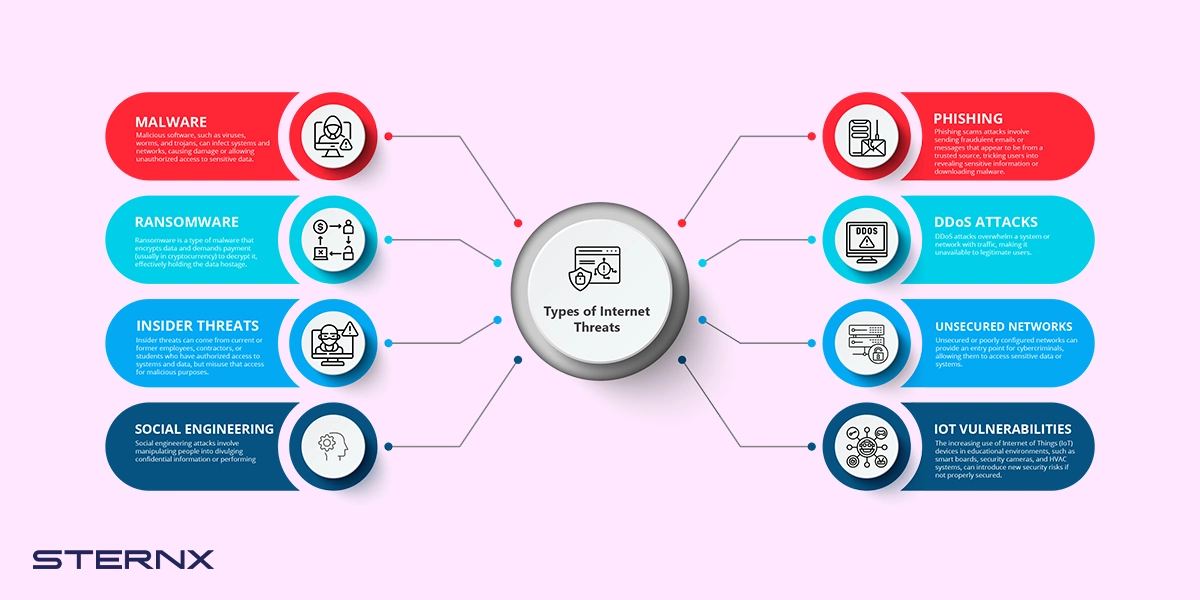
Shielding the Future: Protecting Students in the Digital Age
In today’s technologically advanced world, education is no longer confined within the four walls of a classroom. The advent of the internet and the proliferation of digital devices have brought about a drastic shift in how students learn and access information. While this digital revolution has opened up endless possibilities for educational growth, it has also exposed students to an array of cyber threats. As the stakes continue to escalate, it becomes imperative for educational institutions to implement effective strategies to safeguard the educational environment from these ever-evolving cyber threats.
Key Takeaways:
The Growing Concern of Cyber Threats in Education
In recent years, cyber threats have become a pressing concern for educational institutions worldwide. The interconnected nature of the digital landscape has made schools vulnerable to various types of attacks, such as data breaches, phishing attempts, and identity theft. These threats can have severe consequences not only for the affected individuals but also for the integrity of the education system as a whole.
One of the primary reasons why educational institutions are attractive targets for cybercriminals is the wealth of personal and sensitive information they possess. Student records, medical information, and financial data are all valuable assets that can be exploited for financial gain or malicious intent. Schools have a responsibility to safeguard this data, not only to protect individuals but also to maintain the public’s trust in the education system.
The Need for Comprehensive Cybersecurity Measures
To shield tomorrow’s minds from cyber threats, educational institutions must adopt a proactive and comprehensive approach to cybersecurity. This involves implementing a range of technological measures, providing thorough education to students and staff, and reinforcing policies that promote safe online practices.
Technological Measures:
Investing in robust cybersecurity infrastructure is the first line of defense against digital threats. Educational institutions should leverage advanced firewalls, intrusion detection systems, and antivirus software to monitor and protect their networks. Regular software updates and patches should also be applied to ensure any known vulnerabilities are immediately addressed.
Additionally, the integration of multi-factor authentication protocols can significantly enhance the security of online platforms and prevent unauthorized access. By requiring users to provide multiple forms of identification, such as passwords and unique verification codes, institutions can significantly reduce the risk of data breaches and unauthorized account access.
Student Education:
Education plays a critical role in defensive cybersecurity measures. First and foremost, students must be informed about the potential risks they face online. From an early age, they should learn about responsible internet usage, safe browsing habits, and the importance of avoiding suspicious links and phishing attempts.
Implementing cybersecurity awareness programs that cover a broad range of topics can contribute to a safer digital learning environment. Students should be educated on data privacy, password security, and the importance of reporting any suspicious activities they encounter. By empowering students with the knowledge and tools they need to protect themselves, educational institutions can foster a culture of cybersecurity awareness and responsibility.
Policy Reinforcement:
Creating and enforcing comprehensive policies surrounding digital usage and protection is vital for the security of the educational environment. These policies should outline expectations for students, parents, and staff members to uphold secure online practices.
In addition to implementing policies, educational institutions should regularly review and update them to address emerging threats and technologies. By keeping policies current and relevant, schools can ensure that they are continuously adapting to new challenges and maintaining an effective defense against cyber threats.
Frequently Asked Questions
Conclusion
The digital era has undoubtedly enhanced the educational experience for students, but it has also introduced new challenges and threats. Shielding tomorrow’s minds from cyber threats is essential to safeguard the educational environment and protect student privacy.
By implementing comprehensive cybersecurity measures, educating students about responsible online behavior, and enforcing effective policies, educational institutions can establish a safe digital learning environment for the next generation. Stay informed, stay protected!
Source: insidertechno.com